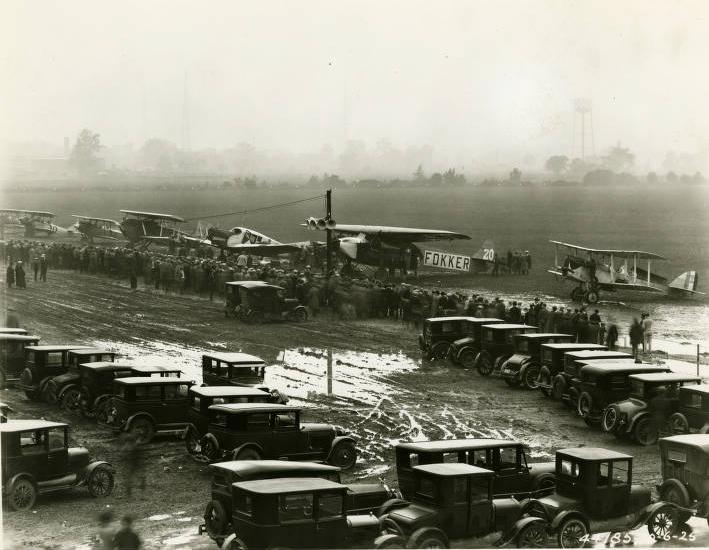On Indianapolis’ southwest side, Stout Field lies west of Holt Road and north and south of Minnesota Street. In 1926, the City of Indianapolis leased 200 acres south of Minnesota Street for its first municipal airport.

The site, in turn, was leased to the State of Indiana, and officers and men of the 113th Observation Squadron of the Indiana National Guard were hired to operate the new airport. It was alternately known as Airport, the National Guard Flying Field, and the Indianapolis National Guard Airport. Informally at first, and later officially, the site became known as Stout Field in honor of Lt. Richard H. Stout, a decorated veteran of World War I and a member of the , who died in an airplane crash at .
Curtiss (later Curtiss-Wright) Flying Service leased part of the field for air passenger service operations and a flying school. Curtiss’ manager was Captain , another Indiana National Guardsman for whom the city’s second municipal airport would later be named. Stout Field was established as one of 12 stops along a Transcontinental Air Transport (TAT) route from New York to Los Angeles. Passengers traveled by train at night and by air during the day in an almost non-stop trip across the country.
A larger airport was needed, and Stout Field could not be expanded to the necessary size. So the city purchased 1,000 acres on the site of today’s , opened a new municipal airport there in 1931, and the state purchased Stout Field. Both Curtiss and TAT moved to the new site even before it was formally dedicated.
During World War II, the U.S. Army Air Corps (later the U.S. Army Air Forces) leased the field for one dollar a year from the state, and it became Stout Field Army Air Base. The new Troop Carrier Command was established at Stout, and the group conducted training and directed worldwide air transport operations from there throughout the war.

The army purchased 80 acres north of Minnesota Street for a base housing area. Following the war, it became a public housing area (known as Tyndall Towne) and was purchased by the state in 1956. An Indiana National Guard armory sits there today. The army also purchased 16 acres south of the field for a temporary housing area (known as Tent City). It was deeded to the city in the 1970s.
Following the war, the Indiana State Police moved into Stout. In 1948, additional land was purchased to the west for runway extensions, but, in 1953, it and much of the former field proper were sold because of the inability to handle military jet aircraft. In 1964, following a State Police relocation, the Indiana National Guard headquarters moved to Stout. In 1971, the National Guard’s last air operations were moved away from the field.
In December 1977, the Indiana National Guard opened the largest armory constructed in the nation to that date since World War II at 3912 West Minnesota Street just north across the street from the original Stout Field proper. The following year, both the motor armory and the artillery armory on the city’s southside were sold.
By the 1980s, the Indiana National Guard Headquarters and the United States Property and Fiscal Office (USPFO) (which moved to Stout Field in 1951) had outgrown their space and needed to expand. Two new buildings, the USPFO building and the Headquarters building were constructed at Stout Field in the late 1980s and dedicated on May 6, 1990.
The Indiana National Guard continued to grow throughout the 1990s, 2000s, and 2010s, which resulted in another major renovation of Stout Field in 2012. The National Guard Headquarters building and USPFO building were combined and increased in size from 37,375 square feet to approximately 117,375 square feet.
Stout Field is home to the Indiana National Guard’s major command units, including the joint headquarters staff, Indiana Army National Guard, Indiana Air National Guard, and the 38th Infantry Division Band. This facility acts as command-and-control centers for statewide emergency assistance operations as a result of severe flooding, devastating tornados, winter blizzard conditions, and countless other instances of rescue efforts and community assistance programs for Indiana citizens.

Help improve this entry
Contribute information, offer corrections, suggest images.
You can also recommend new entries related to this topic.